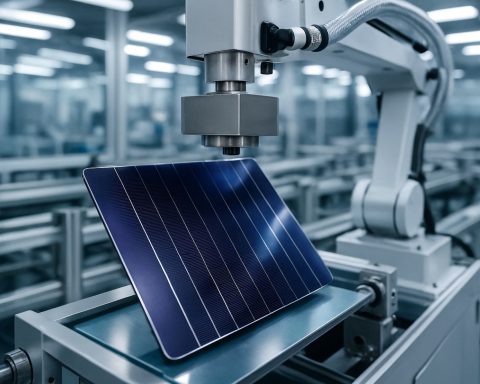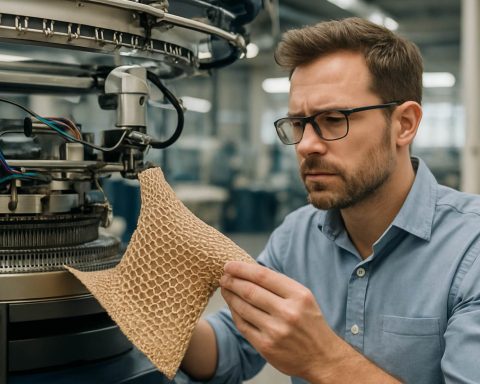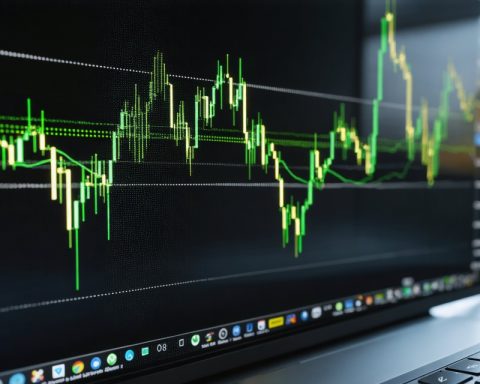- South Korea is advancing an AI-driven future, focusing on creating a robust AI ecosystem by 2025.
- The Korea Intelligent Information Society Agency (NIA) and the Ministry of Science and ICT organized a significant conference to explore supermassive AI technologies.
- A key focus is integrating AI with South Korea’s strengths to enhance global competitiveness in beauty and health, media and content, industry and manufacturing, disaster and safety, finance and accounting, and global cooperation.
- The strategy emphasizes “vertical AI,” which seeks to revolutionize traditional industries through specialized, domain-rich datasets.
- Jongseong Hwang, head of the NIA, plans to support the latest inferential AI technologies and develop crucial service-based data.
- This initiative represents a strategic vision of transforming traditional industries through AI innovation, signaling South Korea’s dedication to leading in AI advancement.
Amidst the steady hum of innovation, South Korea unveils a grand scheme to carve a path into an AI-driven future. The Korea Intelligent Information Society Agency (NIA) alongside the Ministry of Science and ICT has sparked excitement by hosting a pivotal conference on crafting a robust AI ecosystem by 2025. The event drew a crowd of over 300 eager industry leaders and institutional representatives, each curious to explore the emerging landscape of supermassive Artificial Intelligence (AI).
In the wake of this gathering, the air buzzes with excitement and ambition. The NIA shines a light on their strategic voyage, outlining key requirements for the year, alongside the unveiling of the nation’s first AI training data set. The focus is crystalline: merge South Korea’s existing strengths with cutting-edge AI to bolster global competitiveness in six commanding domains—beauty and health, media and content, industry and manufacturing, disaster and safety, finance and accounting, and global cooperation.
The strategy takes a pioneering approach, centered on “vertical AI,” an innovation aimed at revolutionizing the very fabric of traditional industries. By developing specialized datasets enriched with deep domain expertise, South Korea aims to usher in an era where AI seamlessly integrates with the core of established sectors. Picture intelligent algorithms redefining beauty standards, optimizing media consumption, or even predicting financial trends with staggering accuracy. This is not just about keeping pace; it is about setting the pace.
Jongseong Hwang, head of the NIA, envisions a future where AI leaps from theory to tangible application at dizzying speed. He pledged vigorous support for the latest inferential AI technologies, promising to forge specialized data essential for service-based innovations.
As South Korea embarks on this ambitious venture, a critical takeaway emerges: by harnessing AI’s transformative power, traditional industries stand on the brink of unprecedented renewal. Through strategic foresight and a commitment to specialized data, South Korea is not merely dreaming of an AI-powered future but ardently crafting it.
South Korea’s AI Revolution: Transforming Traditional Industries by 2025
South Korea’s Ambitious AI Strategy: What You Need to Know
Embarking on a transformative journey, South Korea stands at the forefront of the AI revolution with a bold strategy aimed at rejuvenating traditional industries by 2025. This initiative represents a strategic blend of South Korea’s existing strengths with cutting-edge AI technologies to create a world-leading AI ecosystem.
Key Elements of South Korea’s AI Initiative
1. Vertical AI Implementation: This concept focuses on creating specialized AI applications that are deeply embedded in specific industries. By leveraging domain-specific datasets, Vertical AI seeks to revolutionize areas such as beauty, health, media, manufacturing, disaster management, finance, and global cooperation.
2. Industry-Specific Innovations:
– Beauty and Health: AI-powered algorithms have the potential to redefine beauty standards and personalization in healthcare, making recommendations based on individual data and preferences.
– Media and Content: Advanced analytics can optimize content recommendation, enhancing viewer engagement and advertising effectiveness.
– Industry and Manufacturing: AI can streamline processes, improve efficiencies, and reduce costs, paving the way for the fourth industrial revolution.
– Disaster and Safety: Predictive models could provide better crisis management by forecasting disasters and optimizing resource allocation.
– Finance and Accounting: Financial algorithms can analyze trends and predict market movements, assisting stakeholders in making informed decisions.
3. AI Training Dataset Launch: The unveiling of South Korea’s first AI training dataset signals a major step towards building robust AI applications. The dataset is designed to provide comprehensive insights crucial for developing these vertical AI solutions.
How-To Steps & Life Hacks in Leveraging AI
– For Businesses: Enterprises should focus on adopting AI in problem areas where they experience frequent bottlenecks. Start by integrating AI for predictive analytics to gain actionable insights.
– For Developers: Invest time in studying South Korea’s AI training datasets to understand industry-specific challenges and opportunities.
Real-World Use Cases
– In Health: AI could enable personalized medicine, tailoring treatment plans based on a patient’s genetic information and lifestyle.
– In Manufacturing: Integrating AI can lead to predictive maintenance, reducing downtime and extending machine life.
Market Forecasts & Industry Trends
According to market research, the global AI market is expected to grow from $47 billion in 2022 to over $190 billion by 2025, driven by increasing adoption across industries. South Korea’s focused approach could likely see it play a pivotal role in this growth trajectory.
Pros & Cons Overview
Pros:
– Enhanced efficiency and productivity across industries
– Data-driven decision-making
– Competitive advantage in the global market
Cons:
– High initial investment in AI infrastructure
– Need for skilled talent to develop and manage AI systems
– Data privacy concerns
Actionable Recommendations
– Businesses: Explore potential collaborations with South Korean tech firms to leverage AI capabilities.
– Educators: Incorporate AI and data analytics courses into curricula to prepare the future workforce.
– Policymakers: Establish clear guidelines to address ethical concerns in AI deployment.
Conclusion
South Korea’s proactive strategy to harness AI’s potential sets a blueprint for other nations aiming to integrate technology into legacy systems. By focusing on vertical AI, South Korea is not just envisioning an AI-powered future but actively building it today. For further insights and updates on AI developments in South Korea, visit the Ministry of Science and ICT.
By understanding these facets, stakeholders can better navigate the evolving landscape and make informed decisions to capitalize on emerging opportunities in the AI domain.









